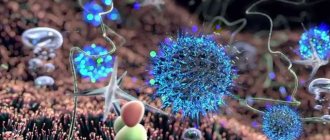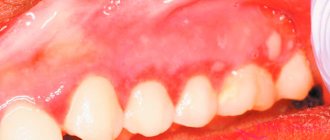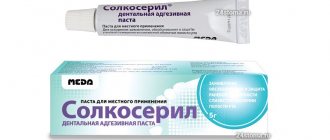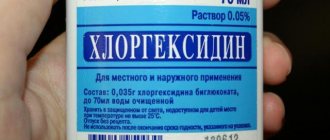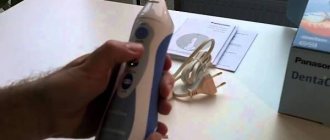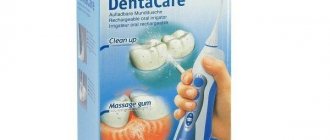Compound
Candide cream contains the active ingredient clotrimazole , as well as auxiliary components: white petrolatum, propylene glycol, emulsion cetomacrogol wax, liquid paraffin, butylated hydroxytoluene, propyl parahydroxybenzoate, methyl parahydroxybenzoate, benzyl alcohol, sodium hydrogen phosphate, sodium dihydrogen phosphate dihydrate, purified water.
The Candide solution contains the active ingredient clotrimazole , as well as glycerol and propylene glycol as additional components.
Vaginal tablets contain clotrimazole as an active ingredient, as well as additional ingredients: purified talc, starch, magnesium stearate, lactose, silicon dioxide, propylparaben, methyl parahydroxybenzoate, sodium carboxymethyl starch.
Drug interactions
Advanced forms of fungal infections require complex treatment. However, interactions with certain medications may affect the effectiveness of Candida. For example, in combination with Nystatin and Amphotericin, the activity of clotrimazole is noticeably reduced.
Interactions with certain medications may affect the effectiveness of the drug
Release form
The medicine has several forms of release. Currently produced are Candide gel 2%, cream for external use 1%, powder for external use 1%, solution for topical use 1%, as well as vaginal tablets (suppositories) Candide.
- The cream is a homogeneous white substance, contained in a 20 g aluminum tube.
- A solution for topical use, transparent, colorless, has a viscous consistency. The bottle contains 15 g of product.
- Powder for external use (powder) is contained in a 30 g plastic bottle.
pharmachologic effect
The drug produces a local antibacterial and antifungal effect, and also has an antiprotozoal and trichomonacid effect. There is a wide range of antifungal effects.
The antimycotic effect of clotrimazole (the active component of the drug is an imidazole derivative) occurs due to a disruption in the synthesis of ergosterol, which is part of the fungal cell membrane. As a consequence, the permeability of the membrane changes and subsequent cell lysis occurs.
There is an interaction of fungicidal concentrations with mitochondrial and peroxidase enzymes, and as a result, the concentration of hydrogen peroxide increases to a toxic level. As a result, the fungal cells are destroyed.
Fungistatic and fungicidal activity was noted against dermatomycetes (Trichophyton rubrum, Trichophyton mentagrophytes, Epidermophyton floccosum, Microsporum canis), molds and yeast-like fungi (fungi Candida spp., Torulopsis glabrata, Pityrosporum orbiculare, genus Rhodotorula).
Clotrimazole also demonstrates activity against the causative agent of lichen versicolor.
The product is effective against gram-positive bacteria and a number of gram-negative bacteria. Provided that high concentrations are used, the drug is active against Trichomonas vaginalis.
Pharmacokinetics and pharmacodynamics
Clotrimazole is poorly absorbed through the skin and mucous membranes, so when the drug is used externally, no systemic effect is observed. When applied externally , a higher concentration of clotrimazole is observed the epidermis
When administered intravaginally, the absorption of clotrimazole is equal to 3% to 10% of the dose that is administered. Within 2 to 3 days, small concentrations of the active substance are observed in the blood and high concentrations in the vaginal secretion.
Metabolism is noted .
Indications for use
The drug Candide is used if the patient has the following diseases or symptoms:
- pityriasis versicolor , pityriasis versicolor ;
- mycoses of the feet and skin folds;
- erythrasma;
- superficial candidiasis , which is caused by yeast, mold and other fungi, dermatophytes , as well as a number of other pathogens that demonstrate sensitivity to clotrimazole;
- mycoses , in which there is a complication of secondary pyoderma;
- candidiasis vulvitis;
- candidal balanitis;
- candidiasis of the skin;
- candidal paronychia;
- candidiasis of the anus and external genitalia;
- fungal diaper dermatitis .
Candida solution for the oral cavity is used for stomatitis of candidal origin.
Vaginal tablets are used to treat genital infections, as well as genital superinfections caused by microorganisms sensitive to clotrimazole.
Candida is also used to sanitize the birth canal during preparation for childbirth.
Side effects
The following side effects may develop when using this drug:
- urticaria , itching , burning and tingling sensation where the cream was applied;
- erythema , swelling , blisters , peeling and irritation of the skin.
If such manifestations are noted, you need to discontinue Candide and Candide B .
When Candida is used intravaginally, the development of local irritation is rarely observed, which, as a rule, disappears on its own with further treatment. Also, with intravaginal use of the drug, the following negative effects may develop:
- itching, burning;
- vaginal discharge and swelling of the mucous membrane;
- headache;
- frequent urination and intercurrent cystitis ;
- pain during intercourse;
- burning sensation in the male genitals.
Oral candidiasis - symptoms and treatment
If treatment is untimely or incorrect, acute candidiasis can become complicated and become chronic or invasive, which is difficult to treat. In addition, complications such as fungal esophagitis, tracheitis, gastrointestinal candidiasis, and candidal sepsis may occur. There is a high probability of inflammation of the genital organs in women and men.
Candidal esophagitis (inflammation of the esophagus). Symptoms: signs of intoxication of the body, bloating, heartburn, sore throat, dysphagia (difficulty swallowing solid food), bitterness in the mouth or sour taste. Can lead to esophageal ulcers, rupture of the esophageal tube, internal bleeding, stricture (narrowing of the lumen) of the esophagus.
Candidal tracheitis (inflammation of the trachea). Symptoms: increased body temperature up to 37 °C, severe pain in the trachea, chest, shortness of breath and a feeling of suffocation when coughing, itching, burning, pain behind the sternum or between the shoulder blades, the appearance of ulcers on the skin. Through abscesses on the walls of the trachea, the fungus can penetrate into the blood, which will subsequently lead to sepsis.
Candidiasis of the gastrointestinal tract . Candida penetrates the intestines and injures the mucous membrane, causing a severe form of dysbiosis. Symptoms: nausea, vomiting with blood and whitish films, increased body temperature to 37-38 °C, bloating and pain in the upper abdomen, diarrhea mixed with white flakes. If the stomach wall is perforated, serious consequences can occur, such as peritonitis (inflammation of the peritoneum) or internal bleeding.
Also a severe complication of oral candidiasis is candidal meningitis , which can be fatal. Most often, the complication occurs in patients with severe concomitant diseases (immunodeficiency, decompensated diabetes mellitus) and in people with reduced immunity. Candidal meningitis is manifested by the following symptoms: increased body temperature to 37.2-37.9 °C, cephalalgia (constant headaches), drowsiness, hemorrhagic rash throughout the body, vomiting, which does not bring relief to the patient, often without preceding nausea. Neurological symptoms may appear: disturbances of consciousness, higher nervous activity, movement disorders, sensitivity, vision.
The danger of the disease lies in a sharp decrease in the body's immunity and the rapid spread of infection to the spinal cord and brain. There are also difficulties in diagnosing the disease due to the erased symptoms and the absence of pronounced meningeal syndrome (signs of irritation of the meninges).
Attachment of a secondary infection. Inflamed organs and tissues are very sensitive to other infections. They penetrate most quickly through ulcers and cracks with bleeding. When a secondary infection is added, ulcerative necrotizing stomatitis or Vincent's tonsillitis, syphilitic seizure, syphilitic dysphonia (impaired vocal function), etc. may occur.
Candidal sepsis is the introduction of a fungal infection into the general bloodstream. A serious condition in which candida penetrates into all organs and tissues. Signs of intoxication of the body: nausea, vomiting, abdominal pain, tachycardia and body hyperthermia develop (increase in temperature above 38 ° C), multiple organ failure occurs (disruption of several functional systems of the body), and the activity of the central nervous system (CNS) is disrupted. In this condition, treatment is carried out only in intensive care units, since if assistance and special therapy are not provided in a timely manner, the outcome can be fatal [2].
Instructions for use of Candida (Method and dosage)
Cream Candide, instructions for use
The ointment is applied externally. Before applying the product, you must first clean and dry the areas of the skin that have been affected. For cleaning, use soap with a neutral pH value. The cream is applied in a thin layer and gently rubbed into the skin, doing this two to three times a day. Treatment lasts as long as prescribed by the doctor. Its duration depends on the location and severity of the disease, as well as on the effectiveness of treatment.
When treating dermatomycosis, the course of use is at least 4 weeks; when treating pityriasis versicolor, the cream should be applied for 1 to 3 weeks. People who suffer from fungal diseases of the skin of the legs should apply the cream regularly for at least two weeks after the symptoms of the disease have disappeared.
How to use the gel also depends on the severity and characteristics of the disease. As a rule, the product is rubbed into the affected area 2-3 times a day. It is advisable to use the gel for another 3-4 weeks in order to completely eliminate possible relapses.
Candide solution, instructions for use
The product in the form of a solution is prescribed for large lesions of the skin, as well as for lesions of the scalp. If a patient is prescribed Candida drops, the instructions for use must be carefully followed. If the oral cavity is affected, apply 10-20 drops of the solution using a cotton swab, doing this 3-4 times a day. It is important to treat all affected areas very carefully. The product should be used until the clinical symptoms disappear.
Instructions for the powder
Candide powder is used externally; it should be applied to the affected areas of the skin 3-4 times a day. It is important to apply the product regularly. The duration of therapy depends on the severity of the disease, as well as on the location of the disease. To completely cure the disease, sometimes treatment continues after the symptoms disappear. The duration of treatment is usually 4 weeks. Patients with pityriasis versicolor are recommended to use the drug for 1-3 weeks, patients suffering from erythrasma are advised to carry out treatment for 2-4 weeks.
The product in the form of vaginal tablets is administered intravaginally; this should be done in a lying position with legs bent. It is necessary to take the tablets once a day, before bedtime. To sanitize the birth canal, one tablet (500 mg of the drug) is administered.
How long does therapy last?
According to reviews of experts in the field of dentistry, with early diagnosis of a fungal infection, the use of the solution gives a rapid therapeutic effect, which can most often be noticed already on the 3-4th day from the start of use. However, for adult patients, the duration of therapy is usually at least 2 weeks.
As mentioned above, this antifungal agent is intended for systemic use. This means that premature cessation of its use in the future will seriously complicate the treatment process. In this case, mild stomatitis can be cured in a week, but only a doctor can determine the exact timing of treatment.
Overdose
When using the cream in high doses, no reactions or life-threatening conditions are observed.
If the drug is taken orally, the patient may develop nausea, vomiting, gastralgia, anorexia, pollakiuria, and allergic manifestations. of hallucinations and drowsiness is rarely observed . There is no specific antidote , activated charcoal is prescribed , and symptomatic therapy is also practiced.
special instructions
Do not apply the product to the skin in the eye area.
When using the medicine, the condition of the liver of a patient who suffers from liver failure should be periodically monitored.
If signs of high sensitivity appear during use, treatment with the drug should be discontinued.
If, after using the product for 4 weeks, there is no effect from the treatment, it is necessary to confirm the diagnosis by visiting a specialist.
The use of the product does not affect the ability to drive vehicles and operate precision machinery.
You should not apply the product for external use to those areas of the skin where there are violations of integrity.
To prevent the development of urogenital reinfection, it is important to treat both sexual partners simultaneously.
If the vagina and labia are affected, Candida cream and vaginal tablets should be used simultaneously.
What are the contraindications
There are no categorical contraindications to the use of the solution, but before starting a therapeutic course, you should definitely consult a doctor and study the composition in order to exclude the possibility of developing allergic reactions to the components. You should also avoid using Candida during pregnancy and breastfeeding. The advisability of using the drug during these periods remains at the discretion of the treating specialist.
Before using the drug, you should definitely consult with your doctor.
Analogs
Level 4 ATX code matches:
Gainomax
Sertaconazole
Ornisis
Metrogil Plus
Livarol
Flagyl
Ginofort
Zalain
Ketoconazole
Candide B6
Gyno-Travogen Ovulum
Kanizon
Metromicon-Neo
Lomexin
Klion-D 100
Neo-Penotran
Gyno-Pevaril
Ginesol
Antifungol
A number of drugs with similar effects are produced. These drugs are Antifungol , Imidil cream , Imidil , Candizol , Amiklon , Kanesten , Candide-B6 , Clotrimazole , Candibene , etc. The price of analogues depends on the manufacturer, release form, and packaging of the drug.
Cream Candide and Candide B have a similar effect, however, Candide B, in addition to clotrimazole, also contains beclomethasone as an active ingredient.
Analogs of Candide
There are other means with a similar effect. So, for example, among analogues of “Candida”, experts in the field of dentistry identify the following drugs with an identical active ingredient in their composition:
- "Canesten" - presented in the form of a spray, the cost of a 30 ml bottle is approximately 350 rubles,
- “Clotrimazole” is a 1% solution with the same active ingredient in its composition, the cost of a 15 ml bottle is approximately 180 rubles,
- “Kanizon” is a cream with a 1% concentration of clotrimazole in its composition, a 20 g tube costs about 75-80 rubles,
- “Candibene” - a cream with a concentration of 1% costs around 130 rubles for a 30 g tube.
Together with Candide, the same pharmacological group also includes such products as Miconazole cream and Mycoseptin ointment. Micogal cream and Binafin oral tablets have pronounced antifungal properties. All of the above drugs are allowed for use only as prescribed by a doctor.
Reviews about Candida
There are mostly positive reviews about Candide cream online. Users note that the ointment is very effective in overcoming problems associated with the development of fungal diseases. Candida solution is often used by parents to treat children, noting that the drops are easy to use and that the negative manifestations of diseases are reduced almost from the first use. Adult patients also write that with the help of a cream or gel they were able to completely cure fungal diseases and get rid of unpleasant symptoms. Thus, Candide cream is no less effective than any other suppositories or other forms of medicine.
Candida price, where to buy
The price of Candide cream 1% is from 250 rubles per package of 20 g. The ointment may cost more, depending on the place of sale. The price of Candide solution is on average 370 rubles. per pack 20 ml. How much this form of the drug costs depends on the packaging. Drops for children in a 15 ml package can be purchased at a price of 270 rubles.
Powder for external use costs an average of 340-380 rubles per 30 g package. Powder for newborns is sold without a prescription at any pharmacy. Gel Candide costs an average of 120 rubles. per pack 30 g. Price of Candida suppositories (cost of vaginal tablets) – from 80 rubles. for 1 piece
- Online pharmacies in RussiaRussia
- Online pharmacies in UkraineUkraine
- Online pharmacies in KazakhstanKazakhstan
ZdravCity
- Candide solution for places.
approx. for the oral cavity 1% 15mlGlenmark Pharmaceuticals LTD RUB 431 order - Candide B cream 1% 15gGlenmark Pharma
RUR 573 order
- Candide solution for external use approx. 1% 20mlGlenmark Pharmaceuticals LTD
502 rub. order
- Candide cream 1% 20g Glenmark Pharmaceuticals LTD
RUB 334 order
- Candiderm cream 30g Glenmark Pharmaceuticals LTD IN
RUB 831 order
Pharmacy Dialogue
- Candide (vial-drop 1% 15ml for oral cavity)Glenmark Pharm
415 rub. order
- Candide (vial 1% 20ml)Glenmark Pharm
479 RUR order
- Candide cream (tube 1% 20g)Glenmark Pharm
RUB 322 order
- Candide B6 (tab. vag. No. 6)Glenmark Pharm
57 RUR order
- Candiderm cream (tube 30g)Glenmark Pharm
RUB 863 order
show more
Pharmacy24
- Candide 1% 20 ml solution Glenmark Pharmaceuticals Ltd, India
118 UAH order - Candide 20 g cream Glenmark Pharmaceuticals Ltd, India
96 UAH order
- Candide 1% 15 ml solution Glenmark Pharmaceuticals Ltd, India
133 UAH order
PaniPharmacy
- Candide liquid Candide solution for oral cavity 1% fl. 15ml India, Glenmark
153 UAH order
- Candide cream Candide cream 1% 20g India, Glenmark
98 UAH order
- Candide liquid Candide solution for external use. approx. 1% fl. 20ml India, Glenmark
127 UAH order
show more
How much does the drug cost?
The cost of Candide depends on the form of its release and the pricing policy of the retailer. The price for a bottle of solution for treating the oral mucosa (15 ml) is approximately 350-400 rubles in Moscow pharmacies.
Candide solution is an effective remedy, which often becomes the best option in terms of price and quality ratio. The drug is non-toxic and does not cause dangerous reactions even if the recommended dosage is exceeded. At the same time, it demonstrates high efficiency in the fight against fungal infections of oral tissues, which is confirmed by numerous positive reviews from doctors and their patients.
1According to data at the office. manufacturer's website: glenmark-pharma.ru.
